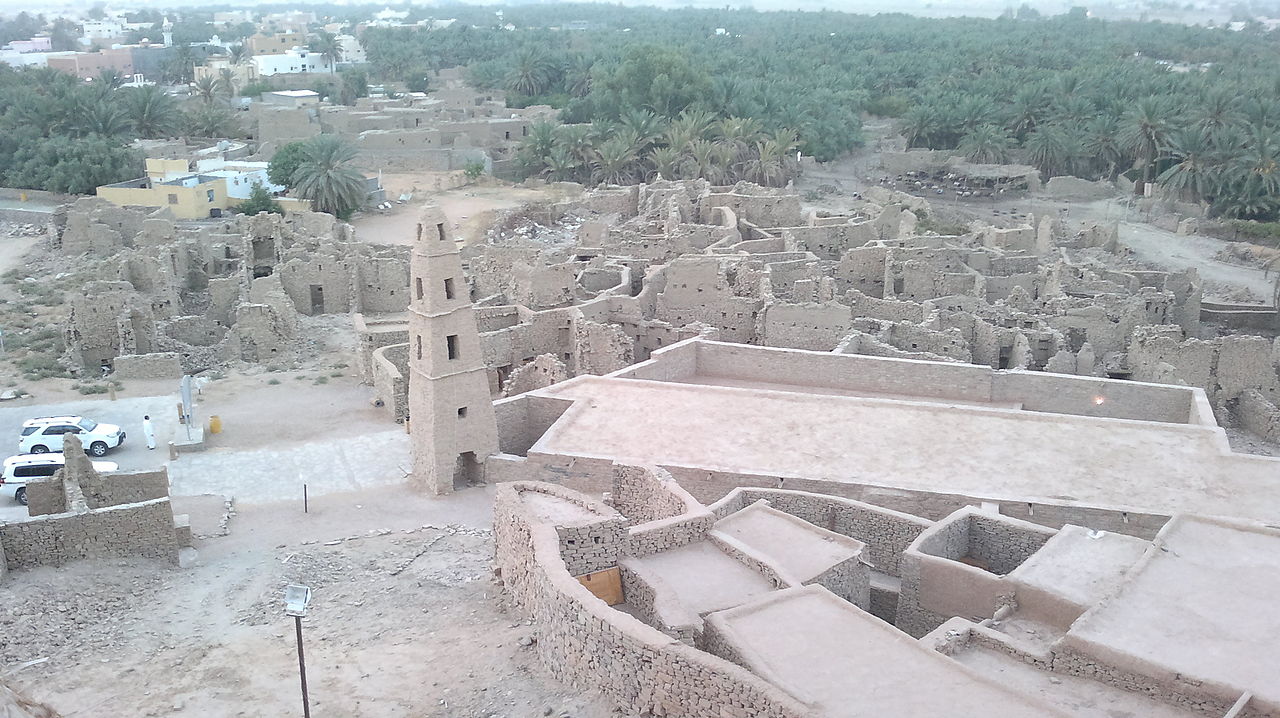 |
|
Dumat al-Jundal is an ancient city of ruins located in North Western Saudi Arabia in the Al Jawf Province. The name Dumat al-Jandal means literally "Dumah of the Stone", since this was the territory of Dumah, one of the twelve sons of Ishmael. The city's ancient Akkadian name was Adummatu. The Mosque of Omar Ibn al-Khattab is situated in the town of Dawmat al-Jandal, a major intersection of ancient trade routes linking Mesopotamia, Syria and the Arabian Peninsula. The mosque itself was built in 634-644. However, the actual building appears to have been built in a much later period, casting doubt upon its attribution to Umar Ibn al-Khattab. Some scholars attribute it to the Umayyad Caliph Omar bin Abul Aziz, and some believe that the mosque was named after Bani'Amr, a tribe that settled in Dawmat al-Jandal. The north (qibla) wall of the mosque faces the al-Marid Castle across a street. On its other three sides, it is surrounded by dense urban housing. Like the other old buildings in the town, the mosque is built in stone. It is composed of a courtyard preceding the main prayer hall to the south and another space, also used for prayer, to the north. The mihrab is a narrow, highly pointed niche in the center of the qibla wall, and is defined by a similar niche with three built-in stone steps to its right. The mihrab, the minbar, and the lower part of the qibla wall are plastered white. Viewed from the exterior, one sees that the mihrab and minbar protrude slightly out of the qibla wall. Also visible is an exposed stone staircase constructed along the qibla wall from the street side that reaches the mud roof. The minaret shaft has a rectangular shape that tapers upward to end in a pyramidal roof. The four internal floors of the shaft were accessed by a now-collapsed spiral staircase entered from the mosque. The Saud family is believed to have rebuilt the prayer hall in 1793. Later, in the mid-nineteenth century, the Saud family restored the mosque. In 1975, buildings surrounding the minaret from the south and the west were demolished, and the minaret and the mosque restored yet again. |